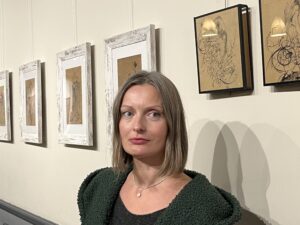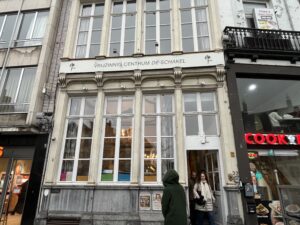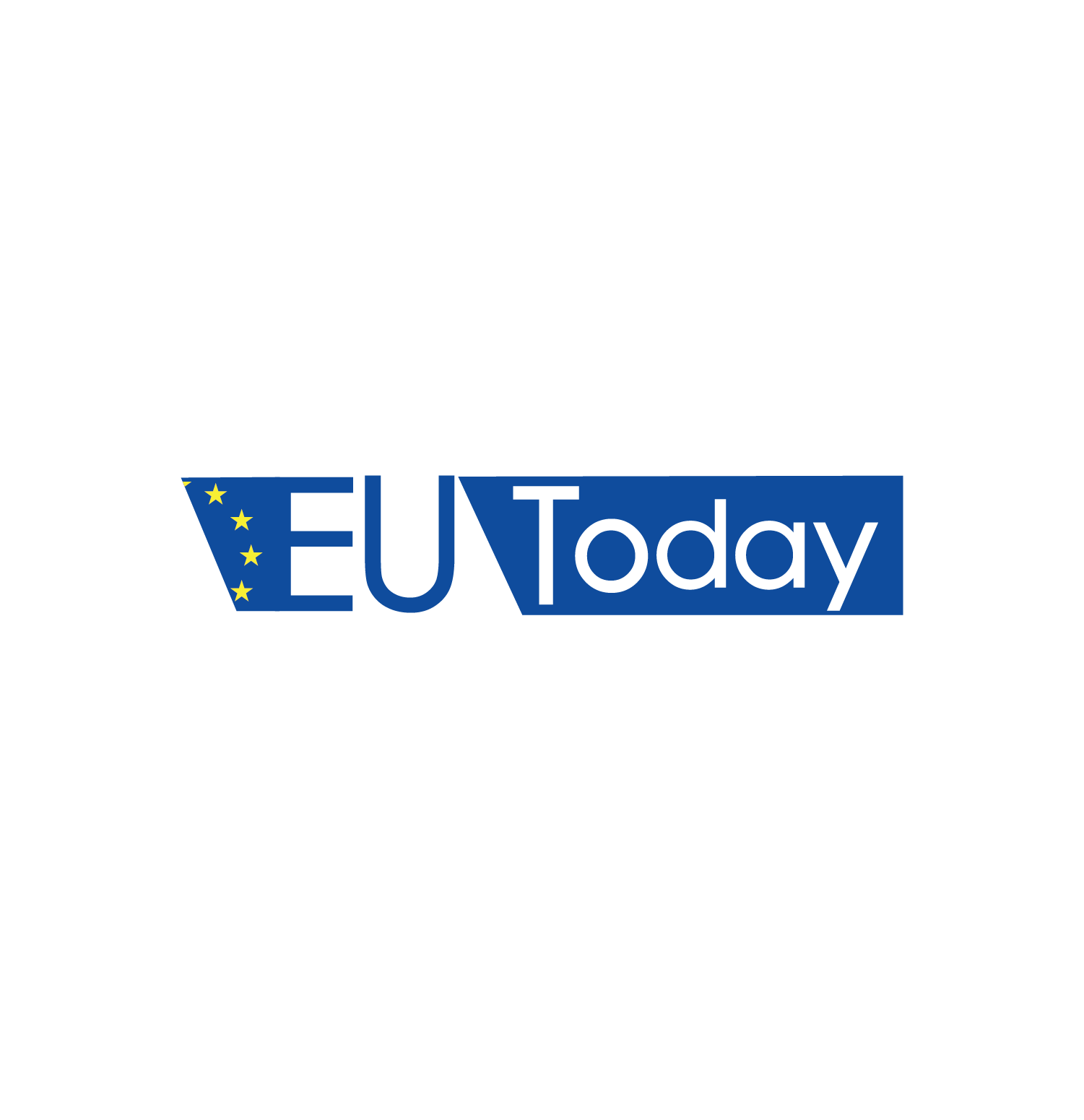Following Vladimir Putin’s unprovoked aggression against Ukraine Belgian welcomed and provided temporary accommodation for some 65,000 people forced to leave their homes as Russian forces deliberately targeted civilian populations. Amongst them were two Ukrainian artists, husband and wife, Alexander Kudriavchenko and Irene Ku.
They were to settle with their three children initially in Antwerp where they were given not only a home, but also a studio. How appropriate in Antwerp – known as the City of Artists! Currently the family lives in the Flemish town of Boom, situated between Antwerp and Brussels.
The two artists have been very much in demand since their arrival – both count amongst their artistic skills qualifications permitting them to work on restoration of the historic artworks found in Belgium’s cathedrals and churches.
However, both have their own distinctive styles when it comes to their own artworks, and regularly exhibit.
We caught up with them this weekend at their exposition in Mechelen.
I asked them, “do you influence artistically one another, do you sometimes play a role of a critic, a critical friend as it were. To what degree do you kind of interact artistically in your life as a couple?”
Irene: “This is a very interesting and a complex question. We are two artists who are quite different, but we are somehow intertwined. For me, Alexander’s advice as an artist are the most valuable that I know. When he gives me advice, it’s very focused, it’s very helpful.
“Sometimes it’s technical things, sometimes things like your first thought when you see an art work, what you will say, what will the audience say.
“Almost always he is 100% correct, therefore I trust Alexander very much, and it helps me a lot. But we try to take something from each other, but also to stay different. And I really like it.”

Alexander Kudriavchenko.
Alex: “I can say the same words about Irene. For me Irene is at a very high level and with all my light snobbism I very much trust her intuition and her view in general.
“It’s about the art, it’s about the aesthetics, it’s about the coloristic. I’ll tell you a secret – she is number one in our family in terms of coloristic.
“It’s really so, because from a painting point of view, Irene is absolutely unique. I think it’s a combination; combination and calligraphy, graphics, and painting at the same time.
“It’s really, in general, these styles that you see here, they somehow, I must say that they came out of our family school.
“We work together, without disturbing each other. I will never say that I will not disturb, although I understand that what I say can have a very strong impact.
“But here, the bird must fly, flutter, I do not know how to tell it best. She must be free by all means, via the materials, the techniques and so on. It is very important.
“We are very careful in our relationship with each other. Very sensitive. Because this world, the inner world of each of us, is very important and at the same time very fragile.”

Irene Ku.
Irene: “I want to add one more thing. I sometimes don’t understand how it all really works, why people like an artwork, what is so special about it.
I feel it’s cool, and people around feel that it is cool, but maybe others do not feel the same. I can not explain it myself, although I have experience, education, and so on.
And the words of Alexander explain this a little, he explains why. And this is some kind of miracle, magic, the fifth element, it’s something present in an artwork. And, well, maybe in this, in this, yes, when it has to be a miracle, we give a little hint to each other. Sasha to me, and I to Sasha.
Alex: “Yes, It really is so. Sometimes, well, this is a typical situation in our family, when you just take the painting from under the brush of another, everything stops, you go and do something else, or start another job, and that’s it. It’s over.
“Even if there is feeling that more needs to be done to complete the artwork. Well, it’s a creative process. It’s just a very responsible attitude in the creative process. The artist must be honest to himself first of all. That’s it. And we help each other in this.”
I asked, “so you’ve been in Belgium now for I think a little bit more than one year, is it? More than one year?
“You came here under horrendous circumstances and we know that unless we’ve been through that, we can’t really imagine how difficult that must have been, particularly with your family.
“How do you feel that you have been received here in Belgium? Not just as a family that needed to get away from a conflict, to get your children away from a war zone, but artistically, how have you been received here in Belgium?”
Irene: “Thank you, it’s a very interesting question. We are not very well fitting into the context of modern Belgian art.
“It’s probably a thing, but… Well, let’s say, life is short, artistic life is also very short. And we really do what worries us today.
“Sometimes we hear different opinions about our art, how much it is in the context of Europe or Belgium.”
Alex: “Contemporaneity, in general.”
Irene: “It’s not always positive things. We are often told that there are a lot of details, or too much mythology, or make it simpler.”
Alex: “Or don’t do anything at all!”
Irene: “But we are who we are. At the same time we are very much influenced by Belgian art. We learn a lot. But we try not to lose our artistic identity.
” I would also add that my graphic series indirectly introduces Belgian audience to Ukrainian poetry, because I use the texts of Ukrainian poets in my graphics and read them to those who are interested in the content. These are the poems of Stus, Antonych, Franko and others.
“And the experiments, as I said, with portraits and free lines, are an influence of European, Belgian, American art.
“Because I feel more like a classical artist. I am a restorer, I love classical painting, I love the history of art. We are looking for our out artistic path in the modern art, various artists, painters, writers.”
Alex: “Because the question was about Belgian artistic space, where we found ourselves, I can say one thing, which surprised me.
“Belgium is a very receptive society to art and to all forms of art in general. And at a very deep level. And this level of acceptance gives the opportunity to create their work, to include the most complex information in our art because as it often happens that a person does not understand what is painted there, what is written, because it is not only about figurative works, but also about graphic works, where there is some naturalistic information.
“I do not say realistic, because it is a little different. And also it is related to abstract works, which we also do. And it is not for the fashion of the day, as they say, but it is just because it turned out that studying allows us to do in different styles, in different techniques and so on.
“From academic naturalism, realism, through different traditions, to the abstract, full, and generally postmodern can be such, rougher. It’s just that the topic or artwork often determines in which style it will be made.
“It was even a problem at the time, because in general, galleries are expecting from you 20 works in one style. But it doesn’t happen that you make 20 works in the same style, otherwise it becomes a routine, like a factory work.
“It often looks so diverse and very different and they say well so it’s so different and so eclectic and so on and so forth.
“We have evaluated and put together a selection from all the works that we have, which we were preparing to exhibit in this space.
“Then we were thinking what should the name be for it? And the first thing that came to mind, as a joke of course, was that it’s like ‘The Swan, the Pike and the Crayfish’, based on the title of the fable written by Ukrainian poet Leonid Hlibov.
“We wanted to name an exhibition like that. We wanted to call it an exhibition because, look, everything is scattered in different directions, nothing matches, neither by style, nor by size.
“But these are purely technical issues when forming an exhibition. Many works we decided not to exhibit in this space, we put them in the cellar, so now it is more or less in one colour, in one tone, in one theme, so that it has a unity. Yes, if you look closely, it is.
“Here are more such colours, not colourful, let’s say, but close. It can be said that this is not a painting, but it is a graphic, it is very apparent. Further, all this, yes, all this side is Irina’s work, they are all colourful here, and then there is the graphics, it is already calligraphy, really calligraphy, and the combination with painting is very cool”.
The exposition is open every Saturday, is free of charge, and will run until December 18th.

Vrijzinnig Centrum DE SCHAKEL Mechelen
Steenweg 32
2800 Mechelen
015 21 24 71
contact@vcdeschakel.be
Click here for articles on Culture at EU Today
———————————————————————————————————————————–

Follow EU Today on social media:
Twitter: @EU_today
Facebook: https://www.facebook.com/EUtoday.net/
https://www.facebook.com/groups/968799359934046
YouTube: https://www.youtube.com/@eutoday1049





1 comment
[…] Alexander Kudriavchenko & Irene Ku, 2 Ukrainian artists exhibit in Mechelen, Belgium […]